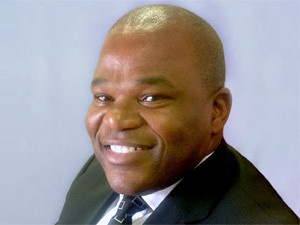
The new subsea cable network set to cover SA's coastline from Mtunzini, in KwaZulu-Natal, to Yzerfontein, north of Cape Town, is part of Techteledata's plans to industrialise and up-skill SA through telecommunications.
Former engineer Musa Phungula, MD and founder of Techteledata (the company behind the new TTD cable), says the subsea cable - tabled for completion in 2015 - is part of his aim to help government achieve its National Development Plan in terms of broadband in SA, and to create a telecoms landscape that is built and managed by South Africans.
According to Phungula, the TTD cable, at an estimated cost of $100 million (about R890 million), will have a capacity of up to 16Tbps and will use new 100Gbps wavelength technology.
The open access cable that will run from Mtunzini to Yzerfontein, via East London and Port Elizabeth, will connect to terrestrial fibre and provide alternate access to Seacom, Eassy (the Eastern Africa Submarine Cable System) and SAFE (the SA Far East cable) - which link to Yzerfontein, in Cape Town, where Wacs (West Africa Cable System) and SAT-3 land.
In SA, for SA
"In the process of setting up the cable, we will be bolstering much-needed skills in SA."
Phungula says, while the company's requisite technical partner will operate the cable for the first five years, Techteledata will train and equip home-grown minds in the engineering field, who will ultimately have the skill to run the cable themselves.
"We have to look at this project as a South African infrastructure project more than anything else. We want to develop the skills of local people so that we have the expertise after five years to run the infrastructure ourselves, as opposed to following in the footsteps of so many other companies that have their operation centres outside of SA."
As it is, says Phungula, SA suffers from a serious skills shortage. "We want to be able to say we have the competency and expertise here on our own soil and we can operate the undersea cables ourselves."
He says the company will eventually emerge as a wholly South African-run company. "We will be the only company that will have 75% or more local shareholders. 25% will be made up of our technical partner, which will be on board for five years - after which the TTD cable will be 100% South African-owned."
Phungula says the project will have far-reaching ramifications for the future of telecoms in SA, in terms of both Internet penetration and the economy. "We are talking about a project that has the capacity to generate $150 million in this country per year, and that money will not be leaving the confines of our borders."
He says industrialisation needs to take place in SA, in order for the country to rise up to the level of other international developing countries. "SA is not industrialised and that is why we are viewed as a developing country. The only way to create employment is through industrialisation - not foreign direct investment."
Viable venture
Ovum's emerging markets analyst, Richard Hurst, says the introduction of the TTD cable to SA's shores makes "perfect sense", despite the debate that our coastlines are inundated with subsea cables already.
"For one thing, it brings in a local level to the moving of traffic, and it has the option of international links. It basically completes the link around Africa."
While the addition of the cable to SA's subsea cable map will not produce any drastic changes in pricing right away, notes Hurst, it will bring efficiency on both a local and international level.
Share